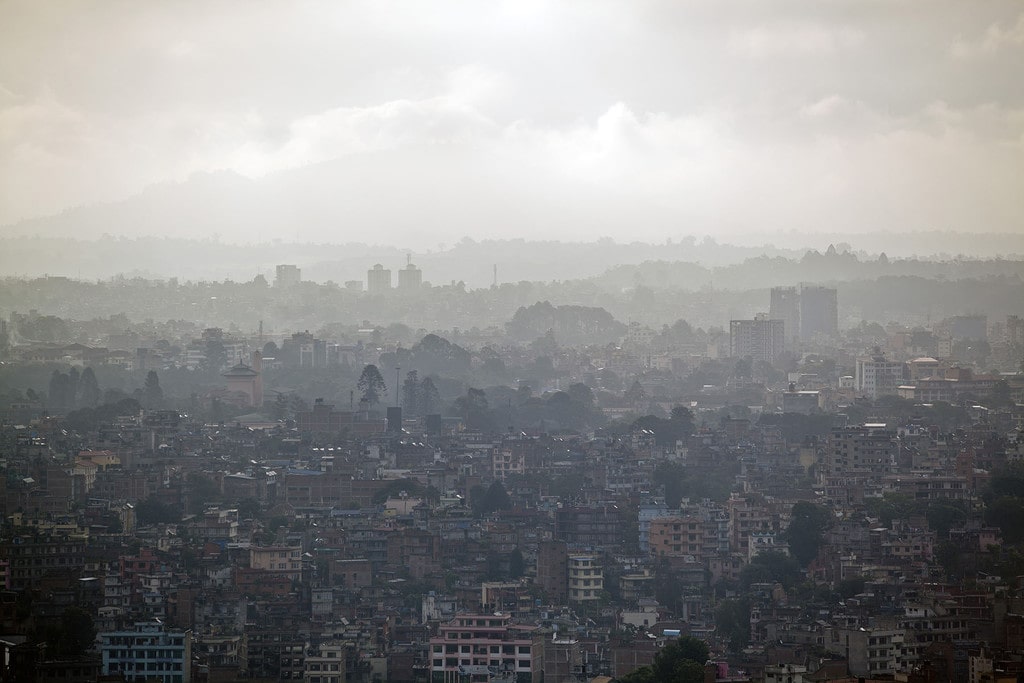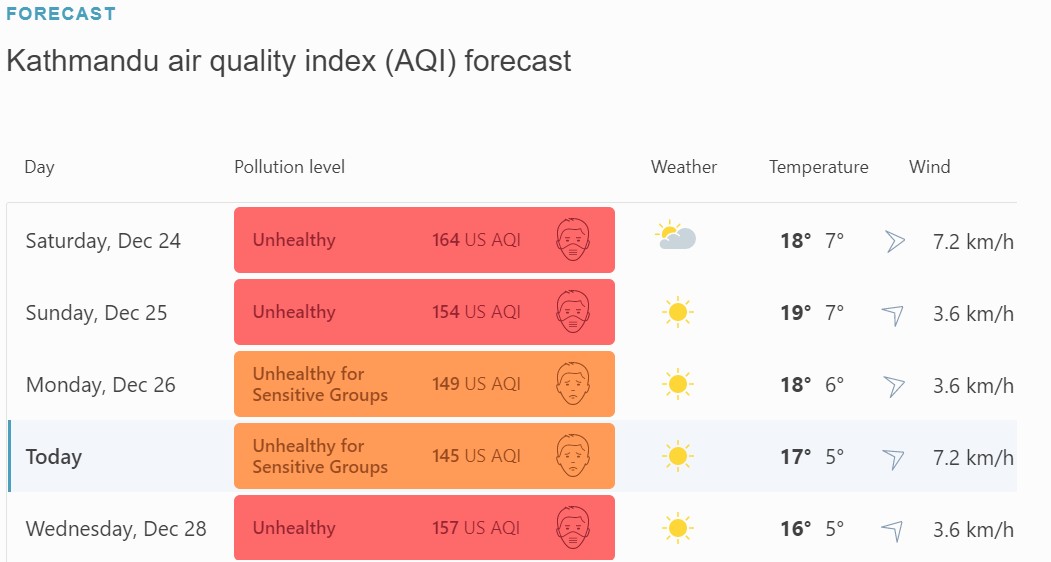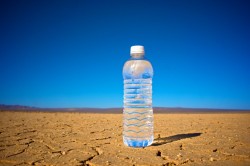Environment

With the winter setting in, health experts have warned of health risks associated with air quality as cold temperatures and calm winds trap pollutants closer to the ground.
As a result, the number of tiny particles in the air shoots up considerably, increasing the risk of respiratory-related ailments ranging from nasal infection to bronchitis, asthma and chronic obstructive pulmonary disease (COPD).
An international study reveals that Nepal has the world's highest age-adjusted death rate for COPD, with 182.5 deaths per 100 000 population. The cause of the deaths: air pollution.
According to the World Health Organization, air pollution is the contamination of the indoor or outdoor environment by any chemical, physical or biological agent that modifies the natural characteristics of the atmosphere.
Household combustion devices, motor vehicles, industrial facilities and forest fires are familiar sources of air pollution.
Smoking and indoor pollution from cooking are major contributors to chronic obstructive pulmonary disease.
Pollution in Nepal is related to rubbish burning, the usage of biomass fuels, and road traffic, according to Jay Kaufman, an author of the study and professor in the Department of Epidemiology, Biostatistics, and Occupational Health at McGill University in Montréal, Canada told SciDev.Net.
Nepal Burden of Disease 2019, a report released by the Nepal Health Research Council, revealed that COPD was responsible for 16.3 per cent of total deaths, up from 6.1 per cent of total deaths in 1990.
Dr Deebya Raj Mishra, associate professor of Pulmonology, Critical Care and Treatment at BP Koirala Institute of Health Sciences, said: “Indoor air pollution is the major problem in a rural household. Respiratory ailments are caused by burning various materials, including firewood, dung, charcoal, and crop leftovers.”
The growing number of vehicles, brick industries, and unscientific construction activities are major causes of city outdoor pollution.
The real-time air quality index (AQI) was 152 in Kathmandu around 2: 31 pm today. The air quality was very unhealthy.
PM 2.5 concentration in Kathmandu is currently 7.4 times the WHO annual air quality guideline value. According to WHO, the average PM 2.5 should not exceed 15 µg/m3 in 24 hours.
Air pollution affects eyes, skin, lungs, brain and other body parts. Dr Kedar Narsingh KC, chest physician, said: “Dust particles and carbon monoxide causes health problems. Sore throat, skin allergies, upper respiratory tract infection, cough, high blood pressure, lung cancer are some of the problems.”
It is suggested that sensitive groups wear a mask outdoors, run an air purifier, and close windows to avoid dirty outdoor air to prevent respiratory illnesses. Everyone should reduce outdoor exercise when air pollution is higher.
Nepal's air quality often reaches a hazardous level in the winter months – from November to February. On January 5, 2021, the AQI was reported to be 480, which is well above even in the very hazardous range.
AQI and PM 2.5 explained

The AQI is a scale ranging from zero to 500 that accounts for the five different pollutants in the air, including ground-level ozone, particle pollution, carbon monoxide, sulfur dioxide, and nitrogen dioxide.
The “higher the AQI value”, the “greater the level of air pollution” and the “greater the health concern”.
A score below 100 is generally regarded as satisfactory and anything north of the 100 mark means unhealthy, reaching unhealthy as the score climbs to the 300 mark.
PM 2.5 means particles smaller than 2.5 microns in width. For comparison, human hair is about 70 microns thick. These tiny particles are even more potent concerns of health issues.
WHO Facts
Air pollution is one of the biggest environmental risks to health. By reducing air pollution levels, countries can reduce the disease burden from stroke, heart disease, lung cancer, and chronic and acute respiratory diseases, including asthma.
As of 2019, 99 per cent of the global population was residing in areas where air quality was below the standards set by the World Health Organization.
The combined effects of ambient and household air pollution are associated with 6.7 million premature deaths annually.
Ambient (outdoor) air pollution is estimated to have caused 4.2 million premature deaths worldwide in 2019.
Some 89 per cent of those premature deaths occurred in low- and middle-income countries, the greatest number in the WHO South-East Asia and Western Pacific Regions.
Ways for prevention
- Implementing policies to lessen air pollution
- Using smart energy sources for transport
- Keeping industries away from residential areas
- Cooking in gas stoves
- Planting trees
- Managing construction sites
- Wearing masks
Air Pollution tests intensified
The Department of Forests and Environment has assessed automobile emissions as the major cause of air pollution in the Kathmandu Valley and claims to have intensified the emissions testing.
It said it has intensified the fuel emission test on vehicles since December 16 and is preparing to expand to other major cities in the country gradually. In fewer than two weeks, 28 vehicles have been fined for violating the emission standard.
In a notice, the department said that the vehicles failing to pass the test would see legal ramifications according to the Environment Protection Act 2019. The act details the fine can easily reach Rs100,000.
Department’s spokesperson Shankar Prasad Poudel said impromptu inspections had been carried out since mid-December using smoke densitometers. The vehicles failing the test were fined Rs5,000 each and were asked to re-test their vehicle within three days after maintenance.
Poudel said: “Most of the public vehicles tested in the valley failed the test.” According to him, those vehicles’ emissions stood at dangerous levels.
The department has concentrated much testing on diesel-fuelled public buses and jeeps in the valley.”
Vehicles failing in the emission test are forced to re-test until they pass.
The department clarified that passing previous emission tests does not guarantee exemption from testing and fines. So, it requests every vehicle owner to keep their vehicles in condition.






